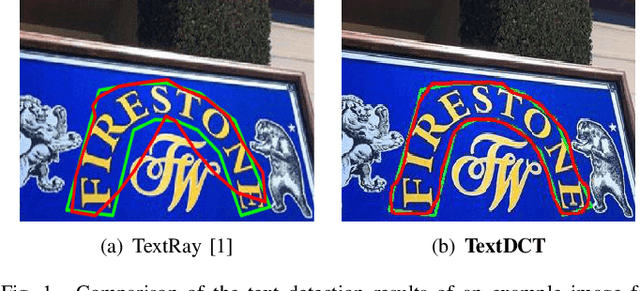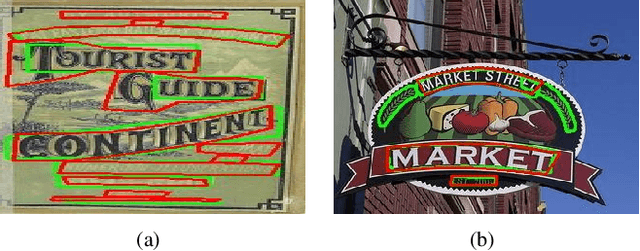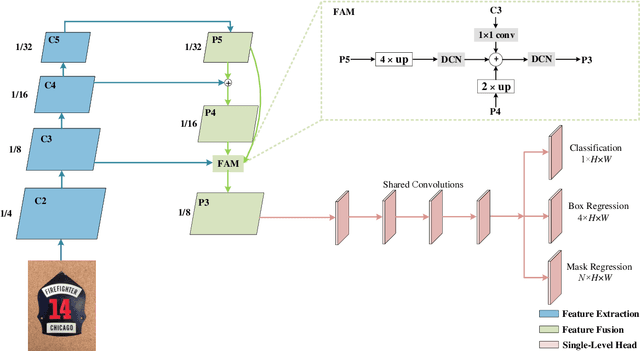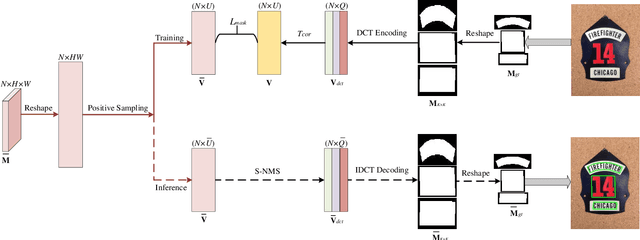Zhiwen Shao
MOL: Joint Estimation of Micro-Expression, Optical Flow, and Landmark via Transformer-Graph-Style Convolution
Jun 17, 2025Abstract:Facial micro-expression recognition (MER) is a challenging problem, due to transient and subtle micro-expression (ME) actions. Most existing methods depend on hand-crafted features, key frames like onset, apex, and offset frames, or deep networks limited by small-scale and low-diversity datasets. In this paper, we propose an end-to-end micro-action-aware deep learning framework with advantages from transformer, graph convolution, and vanilla convolution. In particular, we propose a novel F5C block composed of fully-connected convolution and channel correspondence convolution to directly extract local-global features from a sequence of raw frames, without the prior knowledge of key frames. The transformer-style fully-connected convolution is proposed to extract local features while maintaining global receptive fields, and the graph-style channel correspondence convolution is introduced to model the correlations among feature patterns. Moreover, MER, optical flow estimation, and facial landmark detection are jointly trained by sharing the local-global features. The two latter tasks contribute to capturing facial subtle action information for MER, which can alleviate the impact of insufficient training data. Extensive experiments demonstrate that our framework (i) outperforms the state-of-the-art MER methods on CASME II, SAMM, and SMIC benchmarks, (ii) works well for optical flow estimation and facial landmark detection, and (iii) can capture facial subtle muscle actions in local regions associated with MEs. The code is available at https://github.com/CYF-cuber/MOL.
Modality-Guided Dynamic Graph Fusion and Temporal Diffusion for Self-Supervised RGB-T Tracking
May 06, 2025Abstract:To reduce the reliance on large-scale annotations, self-supervised RGB-T tracking approaches have garnered significant attention. However, the omission of the object region by erroneous pseudo-label or the introduction of background noise affects the efficiency of modality fusion, while pseudo-label noise triggered by similar object noise can further affect the tracking performance. In this paper, we propose GDSTrack, a novel approach that introduces dynamic graph fusion and temporal diffusion to address the above challenges in self-supervised RGB-T tracking. GDSTrack dynamically fuses the modalities of neighboring frames, treats them as distractor noise, and leverages the denoising capability of a generative model. Specifically, by constructing an adjacency matrix via an Adjacency Matrix Generator (AMG), the proposed Modality-guided Dynamic Graph Fusion (MDGF) module uses a dynamic adjacency matrix to guide graph attention, focusing on and fusing the object's coherent regions. Temporal Graph-Informed Diffusion (TGID) models MDGF features from neighboring frames as interference, and thus improving robustness against similar-object noise. Extensive experiments conducted on four public RGB-T tracking datasets demonstrate that GDSTrack outperforms the existing state-of-the-art methods. The source code is available at https://github.com/LiShenglana/GDSTrack.
G-VEval: A Versatile Metric for Evaluating Image and Video Captions Using GPT-4o
Dec 19, 2024



Abstract:Evaluation metric of visual captioning is important yet not thoroughly explored. Traditional metrics like BLEU, METEOR, CIDEr, and ROUGE often miss semantic depth, while trained metrics such as CLIP-Score, PAC-S, and Polos are limited in zero-shot scenarios. Advanced Language Model-based metrics also struggle with aligning to nuanced human preferences. To address these issues, we introduce G-VEval, a novel metric inspired by G-Eval and powered by the new GPT-4o. G-VEval uses chain-of-thought reasoning in large multimodal models and supports three modes: reference-free, reference-only, and combined, accommodating both video and image inputs. We also propose MSVD-Eval, a new dataset for video captioning evaluation, to establish a more transparent and consistent framework for both human experts and evaluation metrics. It is designed to address the lack of clear criteria in existing datasets by introducing distinct dimensions of Accuracy, Completeness, Conciseness, and Relevance (ACCR). Extensive results show that G-VEval outperforms existing methods in correlation with human annotations, as measured by Kendall tau-b and Kendall tau-c. This provides a flexible solution for diverse captioning tasks and suggests a straightforward yet effective approach for large language models to understand video content, paving the way for advancements in automated captioning. Codes are available at https://github.com/ztangaj/gveval
Symmetric Perception and Ordinal Regression for Detecting Scoliosis Natural Image
Nov 24, 2024Abstract:Scoliosis is one of the most common diseases in adolescents. Traditional screening methods for the scoliosis usually use radiographic examination, which requires certified experts with medical instruments and brings the radiation risk. Considering such requirement and inconvenience, we propose to use natural images of the human back for wide-range scoliosis screening, which is a challenging problem. In this paper, we notice that the human back has a certain degree of symmetry, and asymmetrical human backs are usually caused by spinal lesions. Besides, scoliosis severity levels have ordinal relationships. Taking inspiration from this, we propose a dual-path scoliosis detection network with two main modules: symmetric feature matching module (SFMM) and ordinal regression head (ORH). Specifically, we first adopt a backbone to extract features from both the input image and its horizontally flipped image. Then, we feed the two extracted features into the SFMM to capture symmetric relationships. Finally, we use the ORH to transform the ordinal regression problem into a series of binary classification sub-problems. Extensive experiments demonstrate that our approach outperforms state-of-the-art methods as well as human performance, which provides a promising and economic solution to wide-range scoliosis screening. In particular, our method achieves accuracies of 95.11% and 81.46% in estimation of general severity level and fine-grained severity level of the scoliosis, respectively.
SG-LRA: Self-Generating Automatic Scoliosis Cobb Angle Measurement with Low-Rank Approximation
Nov 19, 2024



Abstract:Automatic Cobb angle measurement from X-ray images is crucial for scoliosis screening and diagnosis. However, most existing regression-based methods and segmentation-based methods struggle with inaccurate spine representations or mask connectivity/fragmentation issues. Besides, landmark-based methods suffer from insufficient training data and annotations. To address these challenges, we propose a novel framework including Self-Generation pipeline and Low-Rank Approximation representation (SG-LRA) for automatic Cobb angle measurement. Specifically, we propose a parameterized spine contour representation based on LRA, which enables eigen-spine decomposition and spine contour reconstruction. We can directly obtain spine contour with only regressed LRA coefficients, which form a more accurate spine representation than rectangular boxes. Also, we combine LRA coefficient regression with anchor box classification to solve inaccurate predictions and mask connectivity issues. Moreover, we develop a data engine with automatic annotation and automatic selection in an iterative manner, which is trained on a private Spinal2023 dataset. With our data engine, we generate the largest scoliosis X-ray dataset named Spinal-AI2024 largely without privacy leaks. Extensive experiments on public AASCE2019, private Spinal2023, and generated Spinal-AI2024 datasets demonstrate that our method achieves state-of-the-art Cobb angle measurement performance. Our code and Spinal-AI2024 dataset are available at https://github.com/Ernestchenchen/SG-LRA and https://github.com/Ernestchenchen/Spinal-AI2024, respectively.
Facial Action Unit Detection by Adaptively Constraining Self-Attention and Causally Deconfounding Sample
Oct 02, 2024Abstract:Facial action unit (AU) detection remains a challenging task, due to the subtlety, dynamics, and diversity of AUs. Recently, the prevailing techniques of self-attention and causal inference have been introduced to AU detection. However, most existing methods directly learn self-attention guided by AU detection, or employ common patterns for all AUs during causal intervention. The former often captures irrelevant information in a global range, and the latter ignores the specific causal characteristic of each AU. In this paper, we propose a novel AU detection framework called AC2D by adaptively constraining self-attention weight distribution and causally deconfounding the sample confounder. Specifically, we explore the mechanism of self-attention weight distribution, in which the self-attention weight distribution of each AU is regarded as spatial distribution and is adaptively learned under the constraint of location-predefined attention and the guidance of AU detection. Moreover, we propose a causal intervention module for each AU, in which the bias caused by training samples and the interference from irrelevant AUs are both suppressed. Extensive experiments show that our method achieves competitive performance compared to state-of-the-art AU detection approaches on challenging benchmarks, including BP4D, DISFA, GFT, and BP4D+ in constrained scenarios and Aff-Wild2 in unconstrained scenarios. The code is available at https://github.com/ZhiwenShao/AC2D.
SimAda: A Simple Unified Framework for Adapting Segment Anything Model in Underperformed Scenes
Jan 31, 2024



Abstract:Segment anything model (SAM) has demonstrated excellent generalization capabilities in common vision scenarios, yet lacking an understanding of specialized data. Although numerous works have focused on optimizing SAM for downstream tasks, these task-specific approaches usually limit the generalizability to other downstream tasks. In this paper, we aim to investigate the impact of the general vision modules on finetuning SAM and enable them to generalize across all downstream tasks. We propose a simple unified framework called SimAda for adapting SAM in underperformed scenes. Specifically, our framework abstracts the general modules of different methods into basic design elements, and we design four variants based on a shared theoretical framework. SimAda is simple yet effective, which removes all dataset-specific designs and focuses solely on general optimization, ensuring that SimAda can be applied to all SAM-based and even Transformer-based models. We conduct extensive experiments on nine datasets of six downstream tasks. The results demonstrate that SimAda significantly improves the performance of SAM on multiple downstream tasks and achieves state-of-the-art performance on most of them, without requiring task-specific designs. Code is available at: https://github.com/zongzi13545329/SimAda
CT-Net: Arbitrary-Shaped Text Detection via Contour Transformer
Jul 25, 2023



Abstract:Contour based scene text detection methods have rapidly developed recently, but still suffer from inaccurate frontend contour initialization, multi-stage error accumulation, or deficient local information aggregation. To tackle these limitations, we propose a novel arbitrary-shaped scene text detection framework named CT-Net by progressive contour regression with contour transformers. Specifically, we first employ a contour initialization module that generates coarse text contours without any post-processing. Then, we adopt contour refinement modules to adaptively refine text contours in an iterative manner, which are beneficial for context information capturing and progressive global contour deformation. Besides, we propose an adaptive training strategy to enable the contour transformers to learn more potential deformation paths, and introduce a re-score mechanism that can effectively suppress false positives. Extensive experiments are conducted on four challenging datasets, which demonstrate the accuracy and efficiency of our CT-Net over state-of-the-art methods. Particularly, CT-Net achieves F-measure of 86.1 at 11.2 frames per second (FPS) and F-measure of 87.8 at 10.1 FPS for CTW1500 and Total-Text datasets, respectively.
IterativePFN: True Iterative Point Cloud Filtering
Apr 04, 2023



Abstract:The quality of point clouds is often limited by noise introduced during their capture process. Consequently, a fundamental 3D vision task is the removal of noise, known as point cloud filtering or denoising. State-of-the-art learning based methods focus on training neural networks to infer filtered displacements and directly shift noisy points onto the underlying clean surfaces. In high noise conditions, they iterate the filtering process. However, this iterative filtering is only done at test time and is less effective at ensuring points converge quickly onto the clean surfaces. We propose IterativePFN (iterative point cloud filtering network), which consists of multiple IterationModules that model the true iterative filtering process internally, within a single network. We train our IterativePFN network using a novel loss function that utilizes an adaptive ground truth target at each iteration to capture the relationship between intermediate filtering results during training. This ensures that the filtered results converge faster to the clean surfaces. Our method is able to obtain better performance compared to state-of-the-art methods. The source code can be found at: https://github.com/ddsediri/IterativePFN.
TextDCT: Arbitrary-Shaped Text Detection via Discrete Cosine Transform Mask
Jun 27, 2022



Abstract:Arbitrary-shaped scene text detection is a challenging task due to the variety of text changes in font, size, color, and orientation. Most existing regression based methods resort to regress the masks or contour points of text regions to model the text instances. However, regressing the complete masks requires high training complexity, and contour points are not sufficient to capture the details of highly curved texts. To tackle the above limitations, we propose a novel light-weight anchor-free text detection framework called TextDCT, which adopts the discrete cosine transform (DCT) to encode the text masks as compact vectors. Further, considering the imbalanced number of training samples among pyramid layers, we only employ a single-level head for top-down prediction. To model the multi-scale texts in a single-level head, we introduce a novel positive sampling strategy by treating the shrunk text region as positive samples, and design a feature awareness module (FAM) for spatial-awareness and scale-awareness by fusing rich contextual information and focusing on more significant features. Moreover, we propose a segmented non-maximum suppression (S-NMS) method that can filter low-quality mask regressions. Extensive experiments are conducted on four challenging datasets, which demonstrate our TextDCT obtains competitive performance on both accuracy and efficiency. Specifically, TextDCT achieves F-measure of 85.1 at 17.2 frames per second (FPS) and F-measure of 84.9 at 15.1 FPS for CTW1500 and Total-Text datasets, respectively.
 Add to Chrome
Add to Chrome Add to Firefox
Add to Firefox Add to Edge
Add to Edge